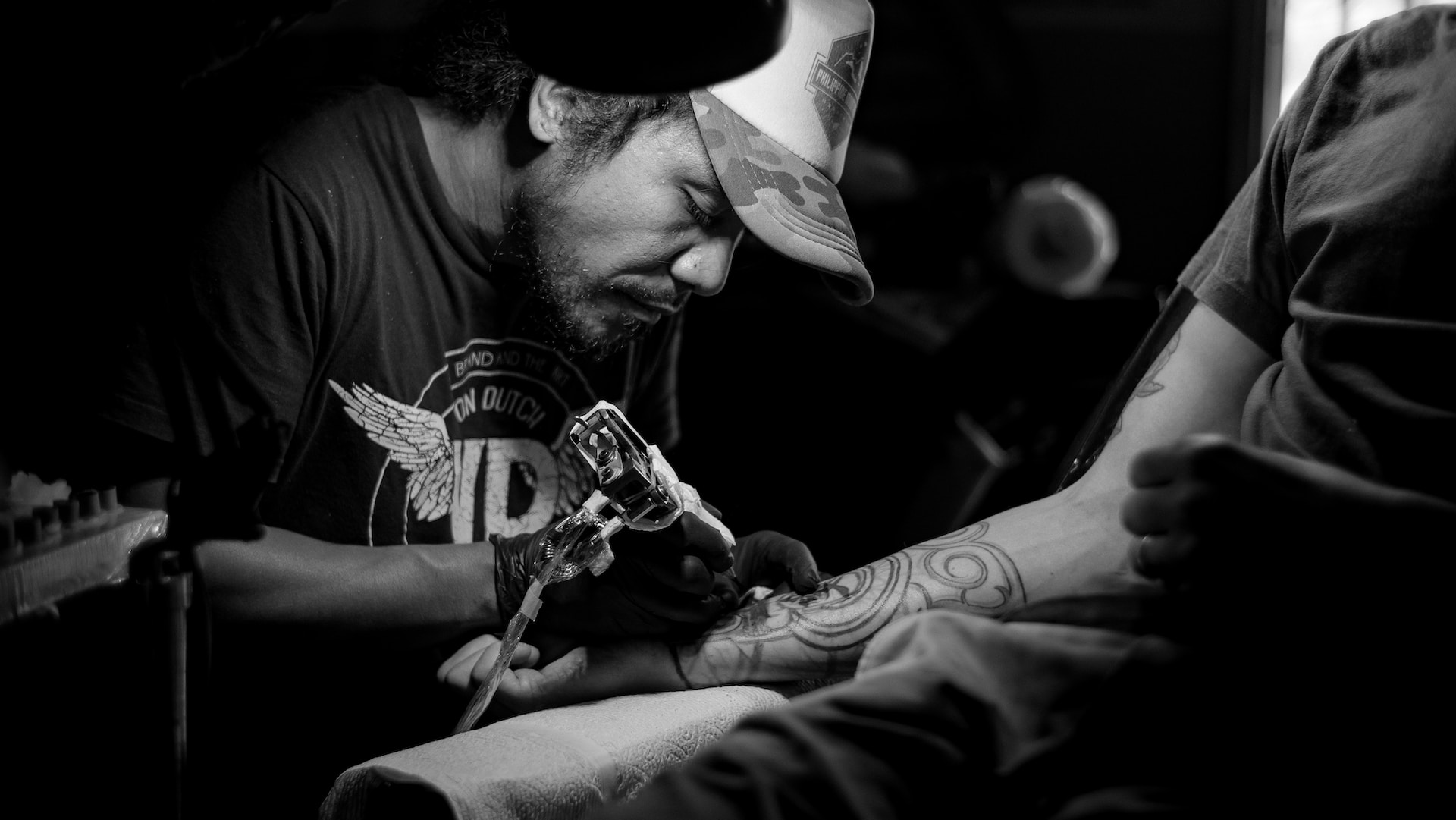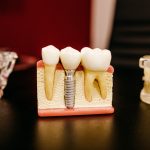
Are you considering getting a tattoo or have recently acquired one? Understanding the intricacies of the tattoo healing process is crucial for ensuring its longevity and vibrant appearance. In this comprehensive guide, we delve into the various stages of tattoo healing, offering insights into the average healing time, factors influencing the process, and best practices for optimal results.
Whether you’re a tattoo enthusiast or a first-timer, this article provides valuable information on what to expect during the healing journey, making it a must-read for anyone looking to preserve the beauty and integrity of their new ink.
Key Takeaways
- Tattoo healing typically takes 2 to 3 weeks, but individual factors and aftercare play a significant role.
- Understanding the distinct stages of healing, from immediate post-tattoo care to long-term settling, is crucial.
- Healing times vary across different body parts due to factors like movement, exposure, and skin thickness.
- Factors affecting healing time include individual differences, tattoo size and complexity, aftercare practices, and ink type.
- Sun exposure can have lasting effects on your tattoo, and precautions such as avoiding direct sunlight and using sunscreen are essential.
- Saniderm, a transparent adhesive bandage, is a popular aftercare choice for its protective benefits during the initial healing period.
- Recognizing signs of improper healing, such as excessive redness or swelling, is crucial for seeking timely professional advice.
How Long Does It Take for a Tattoo to Heal?
The healing time for a tattoo can vary from person to person and depends on several factors, including the size and complexity of the tattoo, the location of the body, and individual differences in skin type and health. However, on average, it takes about 2 to 3 weeks for a tattoo to heal completely.
Tattoo Healing Stages
-
Immediate Post-Tattoo Care (0-2 hours):
- After getting a tattoo, the artist typically covers it with a bandage or plastic wrap to protect it from bacteria and reduce the risk of infection. This initial covering helps prevent exposure to external contaminants and promotes a sterile environment for the freshly tattooed skin.
-
Inflammation and Blood Clotting (0-2 days):
- As tattooing involves puncturing the skin, the body initiates an inflammatory response. Blood vessels constrict to control bleeding, and blood clotting mechanisms are activated. Platelets create a clot to seal the wound, preventing excessive blood loss.
-
White Blood Cell Activity (2-6 days):
- White blood cells play a vital role in the healing process. They migrate to the tattoo site to eliminate foreign particles, including tattoo ink. This is an essential step in the healing process, as it contributes to the stabilization of the tattoo and the prevention of infections.
-
Formation of Scabs (5-10 days):
- Within a few days, the tattooed area may form scabs as a natural part of the healing process. Scabbing helps protect the wound and provides a barrier against potential infections. However, it is crucial not to pick at the scabs, as this can lead to scarring and affect the quality of the tattoo.
-
Peeling and Itching (10-14 days):
- After the scabbing stage, the tattooed skin may peel and itch. This is a sign that the outer layers of skin are regenerating. It’s important to resist scratching, as this can damage the healing skin and disrupt the tattoo’s appearance.
-
Complete Epidermal Healing (2-4 weeks):
- The epidermis, the outermost layer of the skin, completes its healing process within two to four weeks, depending on the individual’s skin type, the size and complexity of the tattoo, and proper aftercare. During this time, the tattoo may appear slightly faded or dull, but this is temporary.
-
Deep Dermis Healing (1-6 months):
- While the epidermis heals relatively quickly, the deeper layers of the skin, specifically the dermis, take longer. The body continues repairing and restructuring the tissue beneath the surface. This deep healing process can extend for several months.
-
Long-Term Settling 6 months and beyond):
- The final appearance of the tattoo may not fully manifest until a few months after the initial healing period. The ink may continue to settle, and the colors may become more vibrant as the skin fully recovers.
Factors Affecting Healing Time:
- Individual Differences: Each person’s body responds differently to the tattooing process. Factors such as age, overall health, and skin type can influence the speed and effectiveness of the healing process.
- Tattoo Size and Complexity: Larger and more intricate tattoos may take longer to heal due to the increased trauma to the skin. Additionally, tattoos in areas with more movement, such as joints, may require extra care and time to heal properly.
- Aftercare Practices: Proper aftercare is crucial for optimal healing. Following the tattoo artist’s instructions, including keeping the tattoo clean, moisturized, and protected from the sun, can significantly impact healing time.
- Ink Type and Depth: The type of ink used and the depth at which it is deposited into the skin can affect healing. High-quality pigments and precise application contribute to a smoother healing process.
Precautions for Protecting Your Tattoo from Sun Exposure:
When it comes to allowing your tattoo to heal, it’s crucial to take precautions to protect it from the potentially harmful effects of sun exposure. Here are some key guidelines:
-
Avoid Direct Sunlight:
- Precaution: Keep your tattoo covered or shaded from direct sunlight during the initial healing period.
- Why: Sun exposure can cause fading and damage to the healing skin, leading to long-term effects on the appearance of your tattoo.
-
Use Sunscreen:
- Precaution: Once the tattoo has fully healed, apply a high-SPF sunscreen when exposed to sunlight.
- Why: Sunscreen helps prevent fading and protects the tattoo from the harmful effects of UV rays.
-
Wait for Full Healing:
- Precaution: Refrain from exposing a fresh tattoo to direct sunlight until it has completed the entire healing process.
- Why: Unhealed tattoos are more susceptible to sun damage, and premature exposure may result in complications.
Healing with Saniderm: A Quick Guide
Saniderm, a transparent adhesive bandage, has become a popular choice for tattoo aftercare. Here’s what you need to know about healing with Saniderm:
-
Duration of Use:
- Timeline: Saniderm is typically worn for the first 3-5 days after getting a tattoo.
- Why: It provides a protective barrier against contaminants, promotes optimal healing conditions, and reduces scabbing.
-
Application and Removal:
- How to Apply: Clean and dry the tattooed area before applying Saniderm, ensuring proper adhesion.
- How to Remove: Gently peel off Saniderm following your tattoo artist’s instructions after the recommended wear time.
- Why: Proper application and removal are essential for preventing skin irritation.
Signs Your Tattoo Isn’t Healing Properly?
While most tattoos heal without issues, it’s crucial to be aware of signs indicating improper healing:
-
Excessive Redness or Swelling:
- Warning Sign: Persistent and intense redness or swelling beyond the initial stages.
- Action: Consult your tattoo artist or a healthcare professional for guidance.
-
Prolonged Pain or Discomfort:
- Warning Sign: Unusual or prolonged pain that doesn’t subside with time.
- Action: Seek professional advice to rule out potential complications.
-
Oozing or Unusual Discharge:
- Warning Sign: Any discharge that is discolored, foul-smelling, or excessive.
- Action: Consult a professional to rule out infection.
Tattoo Healing Do’s and Don’ts:
-
Do Follow a Consistent Cleaning Routine:
- Do: Clean the tattooed area regularly with a mild, fragrance-free soap.
- Why: Consistent cleaning prevents bacterial growth and reduces the risk of infection.
-
Do Prioritize Comfortable Sleep Positions:
- Do: Adjust your sleeping position to avoid direct contact with the tattoo.
- Why: Minimizing pressure on the healing area promotes comfortable and undisturbed sleep, aiding in the healing process.
- Do Wear Loose and Breathable Clothing:
- Do: Opt for loose-fitting, breathable clothing to minimize friction.
- Why: Tight clothing can irritate the tattooed area and impede the healing process.
-
Do Seek Professional Advice if Uncertain:
- Do: Consult your tattoo artist or a healthcare professional if you notice any unusual changes or have concerns.
- Why: Timely advice can prevent potential issues and ensure proper healing.
-
Don’t Expose to Direct Sunlight Prematurely:
- Don’t: Expose your fresh tattoo to direct sunlight before it has fully healed.
- Why: Sun exposure can lead to fading and potential damage to the delicate healing skin.
-
Don’t Apply Excessive Ointment:
- Don’t: Overapply ointment or moisturizer.
- Why: Too much product can clog pores, leading to complications, while too little can result in dryness.
-
Don’t Submerge in Non-Clean Water:
- Don’t: Submerge your tattoo in non-clean water sources like lakes or rivers.
- Why: Contaminated water can introduce bacteria, increasing the risk of infection.
-
Don’t Pick, Peel, or Scratch:
- Don’t: Engage in any activities that involve picking, peeling, or scratching the tattoo.
- Why: These actions can disrupt the healing skin, potentially leading to scarring and color loss.
Final Thoughts
Embarking on the journey of getting a tattoo is not just about the art itself but also about ensuring a smooth and successful healing process. By understanding the intricacies of tattoo healing stages, individual factors, and best practices, you empower yourself to preserve the beauty and longevity of your ink. Whether your tattoo is on a high-movement area like your hands or in a less exposed region like your back, the careful application of aftercare practices is paramount. Remember, a well-healed tattoo is a testament to your commitment to its lasting brilliance.
Also Read: Skincare 101: A Complete Guide to Achieve a Healthy and Glowing Complexion
FAQs
- Q: How long does it take for a tattoo to heal on average?
- A: The average healing time for a tattoo is about 2 to 3 weeks, but individual factors and aftercare practices can influence this duration.
- Q: What are the common signs of improper healing?
- A: Signs of improper healing include excessive redness, swelling, prolonged pain, and unusual discharge. If you notice these, seek professional advice promptly.
- Q: Can the healing time vary across different body parts?
- A: Yes, healing times vary based on factors like movement, exposure, and skin thickness. For example, hands and fingers may take 2 to 3 weeks, while legs and thighs may take 3 to 4 weeks.
- Q: How can I protect my tattoo from sun exposure during the healing process?
- A: Avoid direct sunlight, use high-SPF sunscreen once fully healed, and refrain from exposing a fresh tattoo to sunlight until the entire healing process is complete.
- Q: Is Saniderm a recommended aftercare option?
- A: Yes, Saniderm is a popular choice for its protective benefits. It’s typically worn for 3-5 days after getting a tattoo to create a barrier against contaminants and reduce scabbing.
- Q: What practices should I follow to ensure proper healing?
- A: Follow a consistent cleaning routine, prioritize comfortable sleep positions, wear loose and breathable clothing, and seek professional advice if uncertain about the healing process.
- Q: Can the final appearance of a tattoo change after the initial healing period?
- A: Yes, the final appearance may continue to evolve for several months after the initial healing period as the ink settles, and the skin fully recovers.
#TattooHealing #InkJourney #AftercareTips #TattooLife #BodyArtLove #HealingStages #TattooCareGuide #InkWellness #SkinDeepBeauty #ArtfulHealing #TattooAftercare #InkMagic #LongLastingInk #BeautifulHealing #SkinCanvasArt







No comment yet, add your voice below!